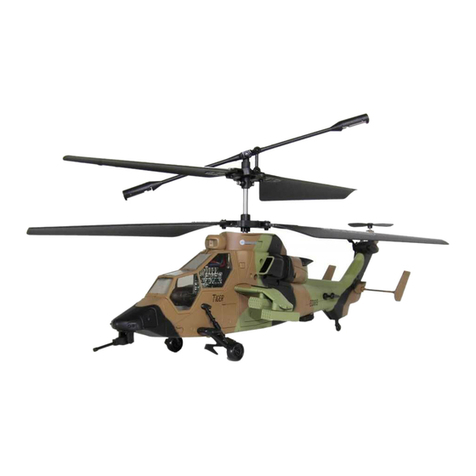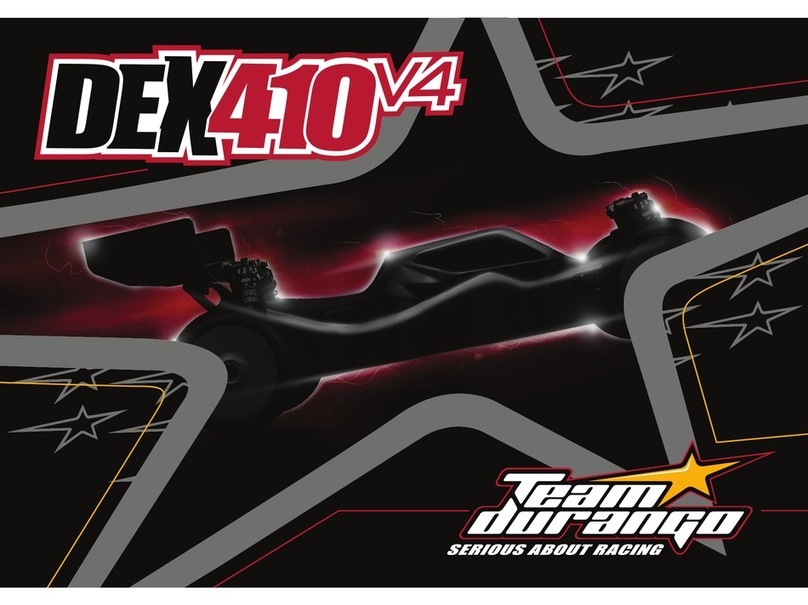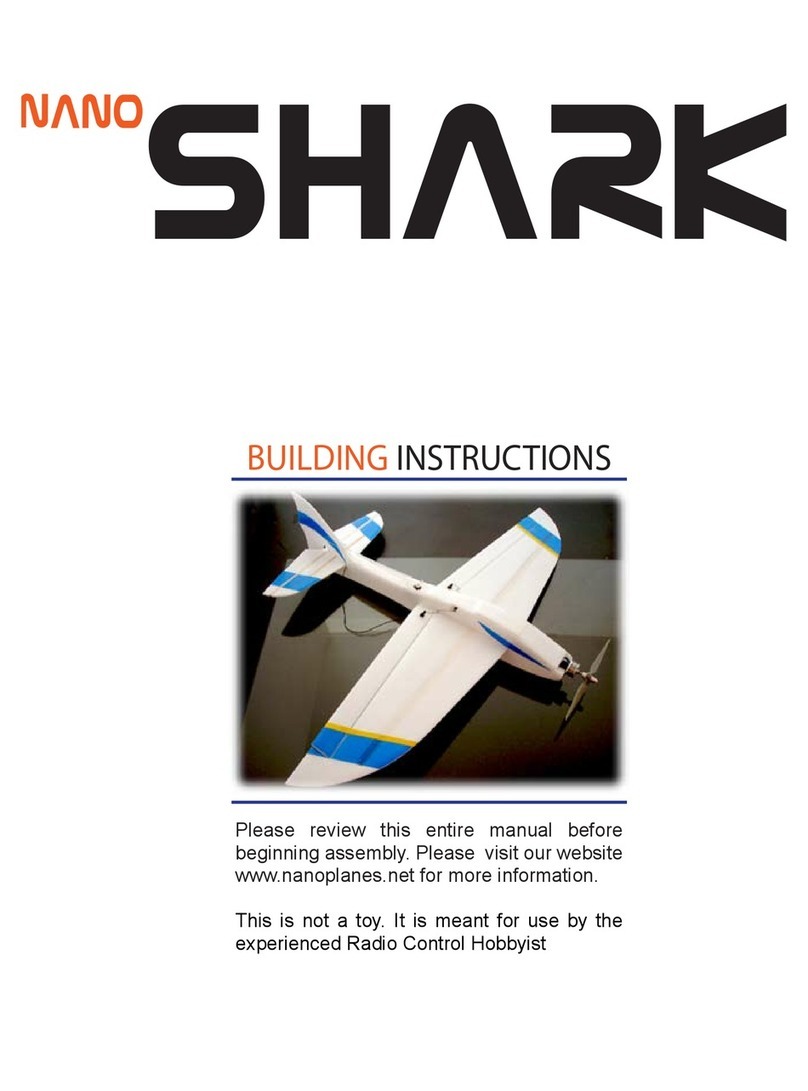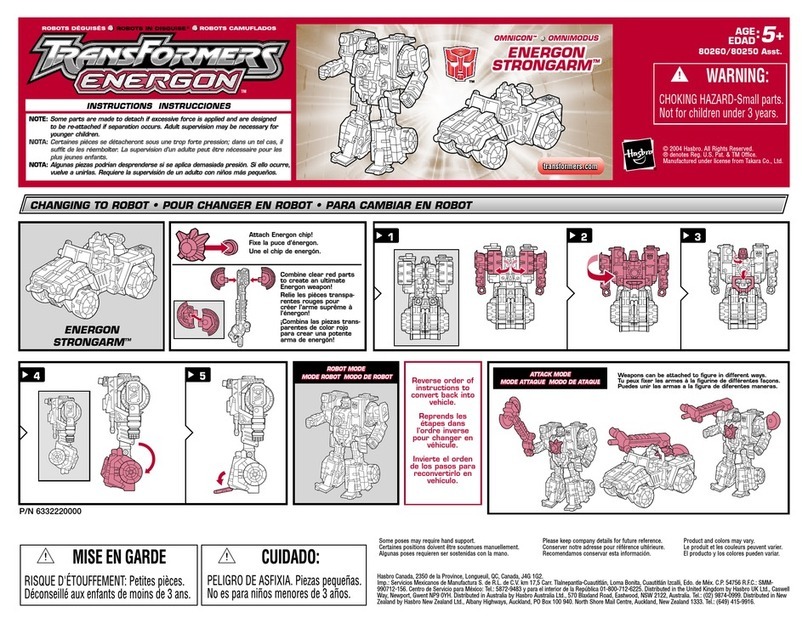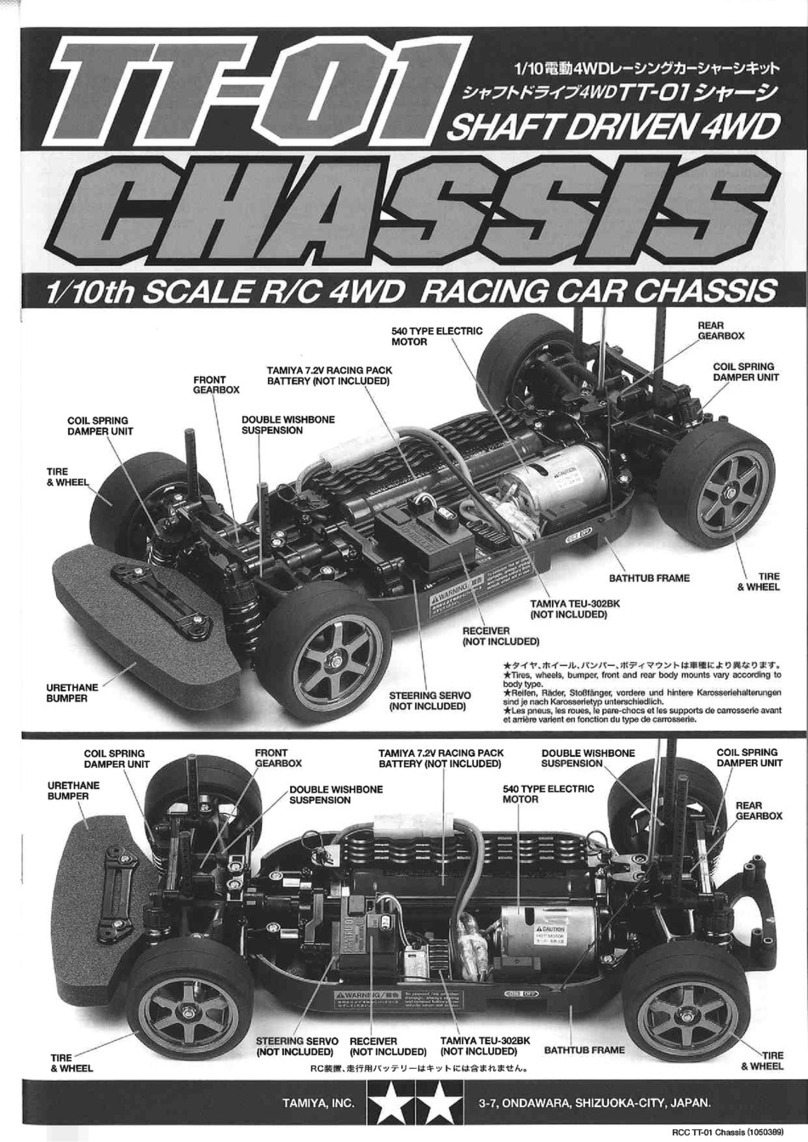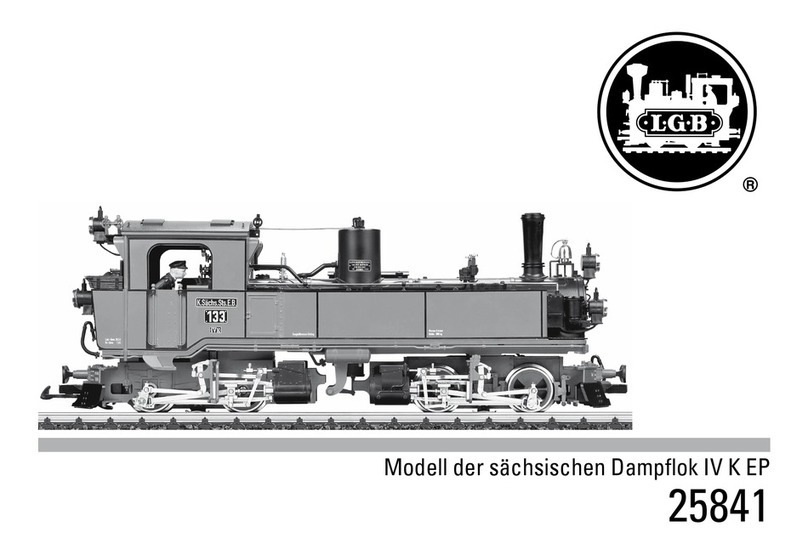SMER Supermarine Walrus 0815 Parts list manual

Stručná historie letounu:
Supermarine Walrus vznikl dlouhým vývojem ze série malých
jednomotorových člunových dvouplošníků u rmy Supermarine
Aviation Works Ltd. Když došlo v roce 1928 ke sloučení s rmou
Vickers-Armstrong Ltd., byly zkušenosti obou továren využity
k přepracování letounu Supermarine Seagull. Do jeho konstrukce
bylo zavedeno použití kovu - nový člunový trup byl celokovový a
nosníky křídel byly z nerezavějící oceli. Prototyp letounu Superma-
rine 236 Seagull byl zalétán 21. 6. 1933. V tomto provedení byly do-
dány 24 letouny australskému námořnímu letectvu pod označením
„Seagull V“. Britské námořnictvo požadovalo zesílení konstrukce
pro použití na katapultech válečných lodí. Upravený letoun byl pře-
dán ke zkouškám 9. 1. 1935, v srpnu téhož roku byl přejmenován na
„Walrus“ a objednán nejprve v počtu 12 kusů. V následujícím roce
byla objednávka zvýšena na 204 letouny.
Letoun byl zprvu určen pro průzkum a byla jím vyzbrojena vět-
šina
britských křižníků a bitevních lodí. Během druhé světové války
sloužily Walrusy prakticky na všech mořích a kromě průzkumné
služby byly používány ke střežení konvojů, řízení dělostřelecké
palby, k vlečení cvičných cílů, k boji proti ponorkám a dokonce
i k bombardování. Zejména se však osvědčily jako záchranné letouny
při pátrání po osádkách sestřelených letadel.
Supermarine Walrus byl vyráběn až do roku 1944 v celkovém
počtu 741 kus v provedení „Walrus Mk I“ a „Walrus Mk II“. Walrus
Mk II měl celodřevěný trup a výkonnější motor. Walrusy sloužily
i po skončení druhé světové války nejen v britském námořním letec-
tvu, v Argentině dokonce až do roku 1966.
Technický popis:
Supermarine Walrus byl třímístný, jednomotorový obojživelný
dvouplošník. Člunový trup s hranatou prosklenou kabinou byl u verze
Mk I kovový, u verze Mk II dřevěný. Nosníky křídel byly ocelové,
zbytek konstrukce dřevěný, potažený plátnem. Křídla bylo možno
složit dozadu podél trupu. Kola hlavního podvozku se zatahovala
naplocho do spodních křídel. Ostruha sloužila zároveň jako vodní
kormidlo.
• Motor:
Walrus Mk I: Bristol Pegasus II M.2 o výkonu 468 kW (635 k)
Walrus Mk II: Bristol Pegasus VI o výkonu 572 kW (775 k)
• Rozměry:
Rozpětí křídel: 13,97 m
Délka: 11,46 m
Výška: 4,65 m
Nosná plocha: 56,67 m2
• Hmotnosti (verze Mk II):
Prázdná: 2 210 kg
Vzletová: 3 260 kg
• Výkony (verze Mk II):
Maximální rychlost: 217 km/h
Cestovní rychlost ve výši 1 100 m: 152 km/h
Stoupavost do 3 000 m za: 12,5 min.
Dostup: 5 630 m
Dolet: 960 km
• Výzbroj:
2x pohyblivý kulomet Vickers nebo Lewis ráže 7,7 mm
v otevřených střelištích, v zadním střelišti někdy dvojkulomet
stejné ráže. Možnost umístění závěsníků na pumy do celkové
hmotnosti 400 kg pod spodními křídly.
A Brief History:
Supermarine Walrus was developed from small single-engine boat
biplanes built by Supermarine Aviation Works Ltd. After the merger
with Vickers-Armstrong Ltd. experience made by both company re-
sulted in redesigning Supermarine Seagull. The plane was built from
metal components – a new boat fuselage was all-metal and wing lon-
gitudinal beams were made of stainless steel. The Supermarine 236
Seagull prototype was test own on June 21, 1933. 24 machines of
this type designated as „Seagull V“ were delivered to the Australian
marine. The British marine required a reinforced structure suitable for
their catapulting from warships. The modied plane was put to the test
on January 9, 1935, and in August of the same year it was released
under the name of „Walrus“. Then an order for 12 pieces followed. In
the following year additional 204 planes were ordered.
The plane was rst utilized as reconnaissance aircraft. Most British
cruisers and battleships were equipped with them. During the Second
World War the Walruses served on almost all fronts. Besides recon-
naissance purposes they were utilized for escorting convoys, control-
ling shelling, towing of targets, ghting submarines and even bombing.
They did a remarkable job when rescuing crews of shot down planes.
The Supermarine Walruses were manufactured until 1944. A total of
741 units was built in modications designated as „Walrus Mk I“ and
„Walrus Mk II“. The Walrus Mk II had a all-wood fuselage and a more
powerful engine. The Walruses served even after the end of the Second
World War not only in the British marine but also in Argentina where
they were utilized until 1966.
Technical Description:
Supermarine Walrus is a three-seat, single-engine, amphibian bi-
plane. A boat fuselage with an angular glassed in cockpit was made
of metal with Mk I and of wood with Mk II. Wing longitudinal beams
were of steel and the rest of the structure was wooden and covered
with linen. Wings were collapsible. Wheels of the main undercarriage
were retracted at into lower wings. The tail wheel served as a water
rudder.
•Engine:
Walrus Mk I: 468 kW (635 HP) Bristol Pegasus II M.2
Walrus Mk II: 572 kW (775 HP) Bristol Pegasus VI
•Dimensions:
Span: 13.97 m
Length: 11.46 m
Height: 4.65 m
Lifting surface: 56.67 sq.m
•Weights (version Mk II):
Landing weight: 2,210 kg
Take-off weight: 3,260 kg
•Performances (version Mk II):
Max. speed: 217 km p. h.
Crusising speed at 1,100 m: 152 km p. h.
Climbing ability in 3,000 m within: 12.5 min.
Ceiling: 5,630 m
Range: 960 km
•Armament:
2 swivelling 7.7 mm Vickers or Lewis machine guns in open
shooter´s posts, with some modication a double machine
gun of the same calibre in a rear shooter´s post. As an option,
under lower wings bomb racks heaving a total weight of up to
400 kg.
1
výrobní družstvo Směr
art.0815

Die Geschichte des Flugzeuges im Grundriss:
Supermarine Walrus entstand durch lange Entwicklung aus der Serie von
kleinen einmotorigen Doppeldecker-Flugbooten bei der Firma Superma-
rine
Aviation Works Ltd. Nachdem es im Jahre 1928 zur Fusion mit der Firma
Vickers-Armstrong Ltd. kam, wurden die Erfahrungen beider Firmen in neuer
Konzeption des Flugzeugs Supermarine Seagull genutzt. Zu seiner Kostruktion
wurde Metallanwendung eingeführt – der neue Bootsrumpf wurde voll aus Me-
tall gefertigt und die Flügelstreben aus Edelstahl. Der Prototyp von Supermarine
236 Seagull wurde 21. 6. 1933 eingeflogen. In dieser Ausführung wurden 24 Flug
-
zeuge an die australische Marineluftwaffe unter der Bezeichnung „Seagull V“
geliefert. Die britische Marine verlangte eine Verstärkung der Konstruktion zur
Verwendung an den Katapulteinrichtungen der Kriegsschiffe. Das so abgeän-
derte Flugzeug wurde zu Prüfungen am 9. 1. 1935 übergeben, im August des
gleichen Jahres wurde es zum „ Walrus“ umbenannt und zuerst in einer Anzahl
von 12 Stück bestellt. Im darauffolgenden Jahr wurde die Bestellung auf 204
Stück aufgestockt.
Das Flugzeug wurde anfänglich zu Aufklärungszwecken und zur Ausrüstung
der meisten britischen Kreuzer und Kriegsschiffe benutzt. Im Verlauf des II.
WK haben die Walrus ihren Dienst praktisch in allen Meeresbreiten entrichten
und neben der Aufklärung wurden sie auch zur Bewachung von Konvois, Steu-
erung des Artilleriefeuers, Schleppen von Übungszielen, im Kampf gegen die
U-Boote und sogar zur Bombardierung eingesetzt. Sie haben sich aber insbe-
sondere als Rettungsflugzeuge bei der Suche nach Besatzungen der abgeschos-
senen Flugzeuge bewährt.
Die Supermarine Walrus wurden in einer Gesamtzahl von 741 Stück in den
Ausführungen „Walrus Mk I“ und „Walrus Mk II“ bis 1944 produziert. Der
Walrus Mk II verfügte über einen voll aus Holz gefertigten Rumpf und einen
leistungsstärkeren Motor. Die Walrus-Flugzeuge dienten auch nach dem Ende
des zweiten Weltkrieges nicht nur in der britischen Marineluftwaffe - in Argenti-
nien waren sie sogar bis 1966 im Einsatz.
Technische Beschreibung:
Supermarine Walrus war ein dreisitziger, einmotoriger Amphibien-Doppel-
decker. Sein Rumpf in Bootsform mit einer verglasten Kabine war bei der Ver-
sion Mk I aus Metall, bei Mk II aus Holz gefertigt. Die Träger der Tragflächen
waren aus Stahl, die anderen Konstruktionsteile aus Holz, bespannt mit Lein-
wand. Auf Streben zwischen den Flügeln wurde mit einem leichten rechten Sturz
ein Sternmotor eingebaut, der in Druckanordnung einen Vierblattpropeller aus
Holz antrieb. Die Tragflächen konnten entlang des Rumpfes zusammengelegt
werden. Die Räder des Hauptfahrwerks wurden flach in die unteren Flügel ein-
gezogen. Der Sporn wurde gleichzeitig als Wasserflosse verwendet.
• Triebwerk:
Walrus Mk I: Bristol Pegasus II M.2 mit einer Leistung von 468 kW
(635 PS)
Walrus Mk II: Bristol Pegasus VI mit einer Leistung von 572 kW (775 PS)
• Abmessungen:
Spannweite: 13,97 m
Länge: 11,46 m
Höhe: 4,65 m
Flügeläche: 56,67 m2
• Massen (Version Mk II):
Leermasse: 2 210 kg
Rüstmasse: 3 260 kg
• Leistungen (Version Mk II):
Höchstgeschwindigkeit: 217 km/h
Reisegeschwindigkeit in 1 100 m: 152 km/h
Steigleistung bis 3 000 m in: 12,5 Min.
Dienstgipfelhöhe: 5 630 m
Reichweite: 960 km
• Bewaffnung:
2x bewegliche Maschinengewehre Vickers oder Lewis Kaliber 7,7 mm in
offenen Gefechtsständen, im Heckgefechtsstand manchmal ein doppeltes
Maschinengewehr mit gleichem Kaliber. Als Option Anbringung von Trä-
gern für Bomben bis zu einem Gewicht von 400 kg unterhalb der unteren
Tragächen.
2
výrobní družstvo Směr
Stavební postup / Stavebný postup
Assembly
K malování používejte barvy,
•Na oddeľovanie použite ostrý nôž.
• Lepidlo nanášajte v tenkej vrstve.
• Na xáciu používajte štipce alebo
gumičky.
• Use tweezers to pick up and hold
the small parts and rubber band
or tape to hold parts together
until the cement dries.
• Komplikované zafarbenie si
predkreslite ceruzkou.
• In case the camouage is more
complex draw the outlines with
pencil rst, then paint parts accor-
ding to the assembly diagram.
• Na maľovanie používajte farby,
ktoré neleptajú polystyrén.
• Obtlačky nanášajte na vyfarbený
model.

1 2 3
654
7 8 9
1110
1
2x

12 13
15
14
14
13 8
3
3
7
10
4
5
9
11
6
2
12
VÝPLETY
RIGGING
BESPANNUNG
VÝPLETY
RIGGING
BESPANNUNG

Použity přibližné odstíny barev HUMBROL
BŘIDLICOVÁ
SLATE GREY
SCHIEFERGRAU
TMAVĚ ZELENÁ
DARK GREEN
DUNKEL GRÜN
ČERNÁ
BLACK
SCHWARZ
MODŘ KACHNÍCH VAJEC
DUCK EGG BLUE
ENTENEIBLAU
HLINÍK
ALUMINIUM
ALUMINIUM
ŽLUTÁ
YELLOW
GELB
H 31
H 30 H 23
H 33 H 56
H 24
3b
8 9 3a 2
3a 892
3b
L 2217
L 2217
1
1

KOLEKCE POLYTECHNICKÝCH STAVEBNIC
KOLEKCE POLYTECHNICKÝCH STAVEBNIC
LETADLA – AIRCRAFT
801 1:40 Fokker S. 11„Instructor“
802 1:48 Fiat G 55
803 1:48 Fokker D-VII
804 1:48 R.A.F. SE 5a. Scout
805 1:48 Fokker Dr. l
806 1:48 Airco D.H. 2
808 1:48 Ansaldo SVA 5
809 1:48 Sopwith Camel
810 1:48 Fiat CR-32 Freccia
811 1:48 D.H. 82„Tiger Moth“
812 1:48 Bristol Bulldog
813 1:48 Macchi Castoldi M.C. 72
814 1:48 Nieuport 11/16„Bebe“
815 1:48 Supermarine Walrus Mk. II
816 1:48 Albatros D III
817 1:48 Reggiane RE 2000„Falco“
818 1:48 Fairey Swordsh
819 1:48 Avia BH 11
820 1:48 Macchi M.C. 200„Saetta“
822 1:48 Piper L4 Cub
823 1:40 Fiat CR-42
824 1:40 Spad VII
825 1:48 Mig 17 F/Lim - 6 bis
827 1:48 MiG 17 PF/PFU/Lim - 6M
828 1:72 Mig 29 A„Fulcrum A“
832 1:72 Polikarpov I-153„Čajka“
833 1:72 Fieseler Fi-156 Storch / MS500
834 1:72 Messerschmitt Me 262 B - 1a/U1
835 1:72 Chance Vought F4U-1„Corsair“
836 1:72 Jakovlev Jak 3
837 1:72 Dewoitine D 520
838 1:72 Morane Saulnier MS 225
839 1:72 Morane Saulnier MS 230
840 1:72 Bloch MB 152
841 1:72 Curtiss P-36/H. 75 Hawk
842 1:72 Hawker Hurricane MK.II C
843 1:72 LeO 451
844 1:72 Breguet 693
845 1:72 Amiot 143
846 1:72 Potez 540
847 1:72 Supermarine Spitre MK. VB
848 1:72 Hawker Tempest MK. V
849 1:72 Morane Saulnier MS 406
864 1:72 Messerchmitt Me 262 A
ART NO MĚŘÍTKO NÁZEV VÝROBKU
ART NO SCALE DESCRIPTION ART NO MĚŘÍTKO NÁZEV VÝROBKU
ART NO SCALE DESCRIPTION
865 1:72 Iljušin IL-2
866 1:72 Curtiss SC - 1 Seahawk
870 1:72 Supermarine Spitre MK. VI
871 1:72 Supermarine Spitre MK. Vc
875 1:72 Curtiss P-40 K/Kittyhawk Mk. III
876 1:72 Fairey Fulmar Mk. I/Mk. II
877 1:72 Fokker Dr. l
878 1:72 Albatros D. Va
879 1:72 Fokker E. III
HI – TECH SÉRIE
882 1:72 Hawker Hurricane Mk.II C
884 1:72 Messerschmitt Me 262 B - 1a/U1
885 1:72 F4U -1 Corsair
886 1:72 Messerschmitt Me 262 A
887 1:72 Supermarine Spitre MK. VB.
888 1:72 Hawker Tempest Mk. V
889 1:72 Iljušin IL-2
LODĚ – SHIPS
901 1:120 Black Falcon
902 1:60 Viking
903 1:180 Cutty Sark
904 1:180 Drakkar Oseberg
905 1:270 Santa Maria
906 1:500 Bonhomme Richard
AUTA – CARS
951 1:32 Rolls Royce„Silver Ghost“ 1911
952 1:24
Alfa Romeo typ 159„Alfetta“ 1950
953 1:24 Talbot Lago 1949
954 1:32 Mercer„Raceabout“ 1912
955 1:32 Packard Landaulet 1912
KLIK – KLAK SYSTEM
970 1:28 Škoda Favorit
972 1:28 Škoda Favorit Rallye 96
990 1:48 Vrtulník Mi 2
991 1:48 Vrtulník Mi 2 Policie
911 1:18 Kanón„Napoleon“


Table of contents


